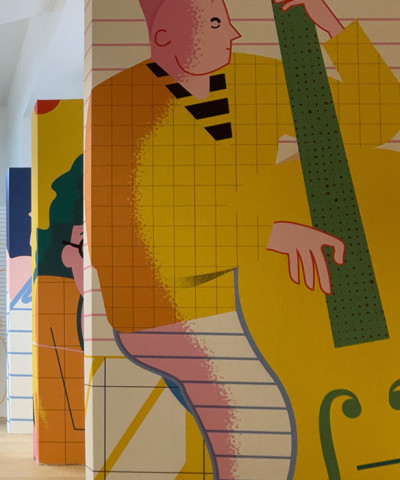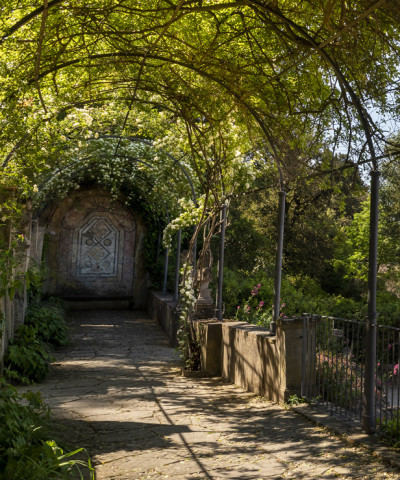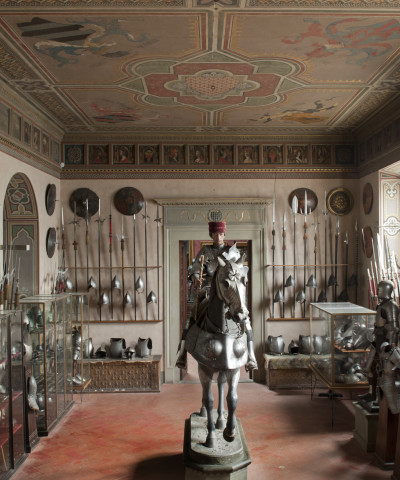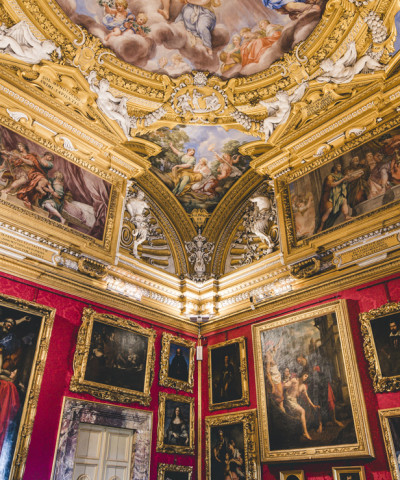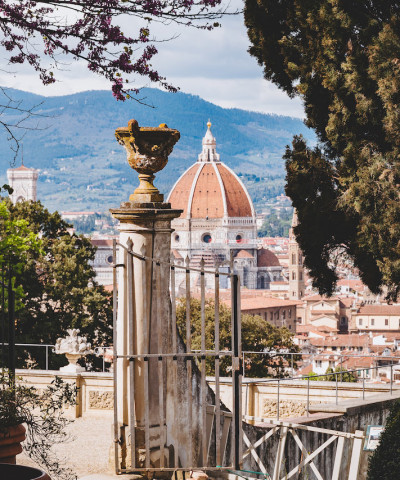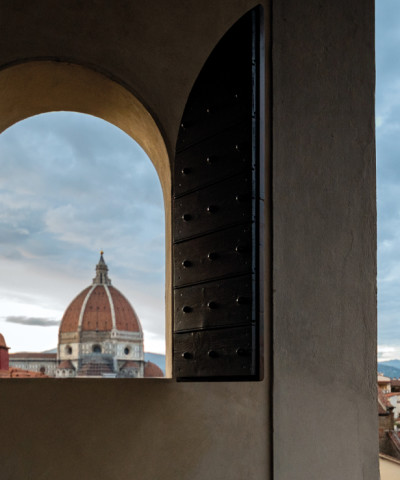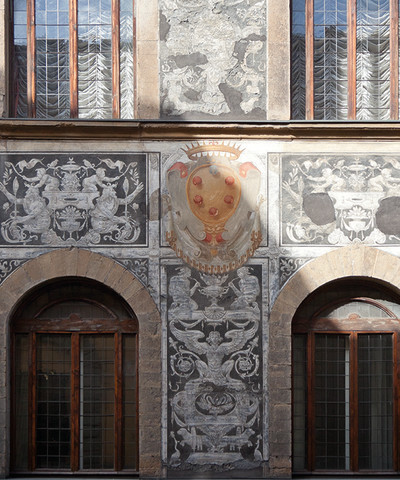The most beautiful gardens in Florence
The green oasis absolutely to see in the city
Florence is not only a city of art, architecture and amazing monuments, but is also synonymous with parks and gardens that will take your breath away. The green areas are many and varied, from the gardens of the Medici family to small hidden gems all over the city. Besides the famous gardens of Boboli, there are other magnificent examples of beauty which behold secrets and surprises, and that by only looking carefully, one can find them. Let us find out together where the most beautiful gardens in the city with breathtaking views and scenery are.
If you are looking for some unusual walks outside the historic center click here, if you are looking for 3 routes to walk we suggest them here, if you are looking for curiosities, secrets and legends, click here!
Giardino di Boboli
With its 45 thousand square meters, Boboli is one of the most spectacular examples of Italian gardens. Built from 1418, when Luca Pitti bought the land, until the modifications made by the Savoys in the 1800s. Fountains and labyrinths, ragnias and galleries of branches, rural statues, caves and casini make Boboli a great open-air museum. The oldest part is developed towards the east from the cave of Moses to the Garden of the Knight.
The extension, wanted by Cosimo II, ideally bypasses the fortification created by Cosimo I for the war against Siena and, winding towards the south, laps Porta Romana. It was Niccolò Pericoli, known as Tribolo, Cosimo's trusted architect of greenery, who harmonized the large space by dividing it into orthogonal sections with boxwood and fruit trees, but it was Ammannati's genius to transform the pietraforte quarry into an amphitheater, first with hedges and then with masonry. It is from there that, with the fountain of the artichoke behind you, you pass the Egyptian obelisk, you pass the fountain of the Forcone and you climb up to the bastion, built by Michelangelo during the siege of 1529, on which lies the garden of the Cavaliere and in whose subsoil a large water cistern was used to irrigate the whole garden. But the visit can be said to be complete only after having been attracted by the Grotta Grande. The result of the alchemy mind of Francesco I and his alter ego Buontalenti, it is a sort of initiatory journey towards the Mannerist beauty capable of reinventing and surpassing nature. The three rooms, frescoed by Bernardino Poccetti, offer rural scenes, the walls, encrusted with stalactites, were sprayed with water from hidden fountains, while the prisons of Michelangelo (now in copy), introduce the interior where you meet first the statue of Paris who kidnaps Helen and then end up in the presence of a Venus pudica, Giambologna, coming out of the bathroom. An amazing path greeted by the dwarf Morgante, Cosimo I's favorite jester, who offers himself old and naked on horseback of the grand ducal turtle (Here is our itinerary with the history and curiosities of the Boboli Gardens).
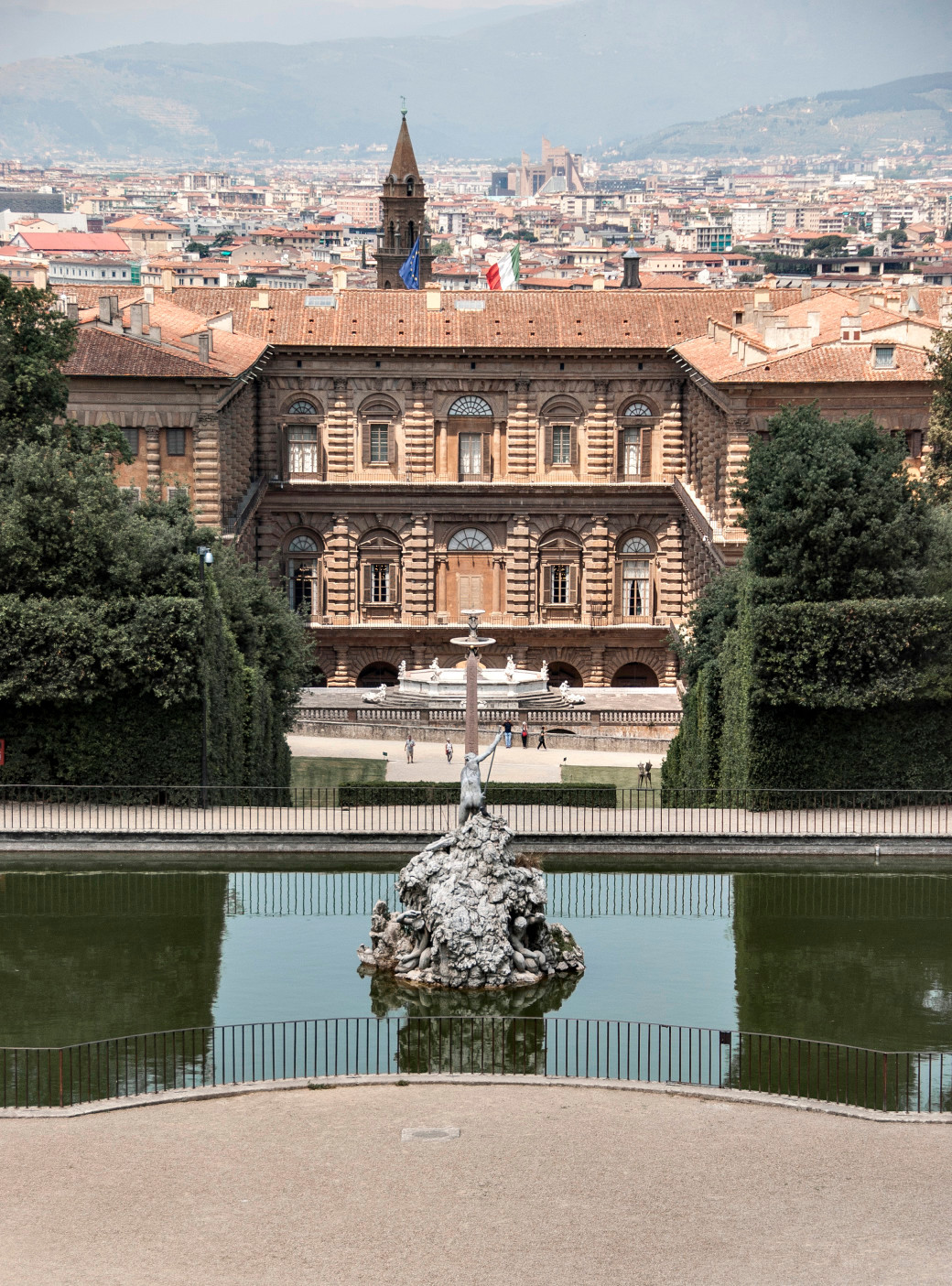 BOBOLI
BOBOLIGiardino delle Camelie
Within the Boboli Gardens is a hidden corner: the Camellia Garden. In the Medici era, this space was accessible only to a few members of the Grand Ducal family. At the end of the 18th century, it was designated for the cultivation of camellias, following the botanical taste of the time. Today, the garden is mainly home to the Camellia japonica species, with 49 specimens belonging to 37 different varieties. Prominent among them is the Candidissima, a magnificent camellia dating back to 1830, known for its size and color. Usually closed to the public, this secret corner of Boboli will be exceptionally open until April 13, on Fridays, Saturdays and Sundays. Access will be by guided tours only, with a maximum of 25 participants per group. Visiting hours: 10 a.m., 12 noon, 1 p.m., 2 p.m., 3 p.m., 4 p.m.
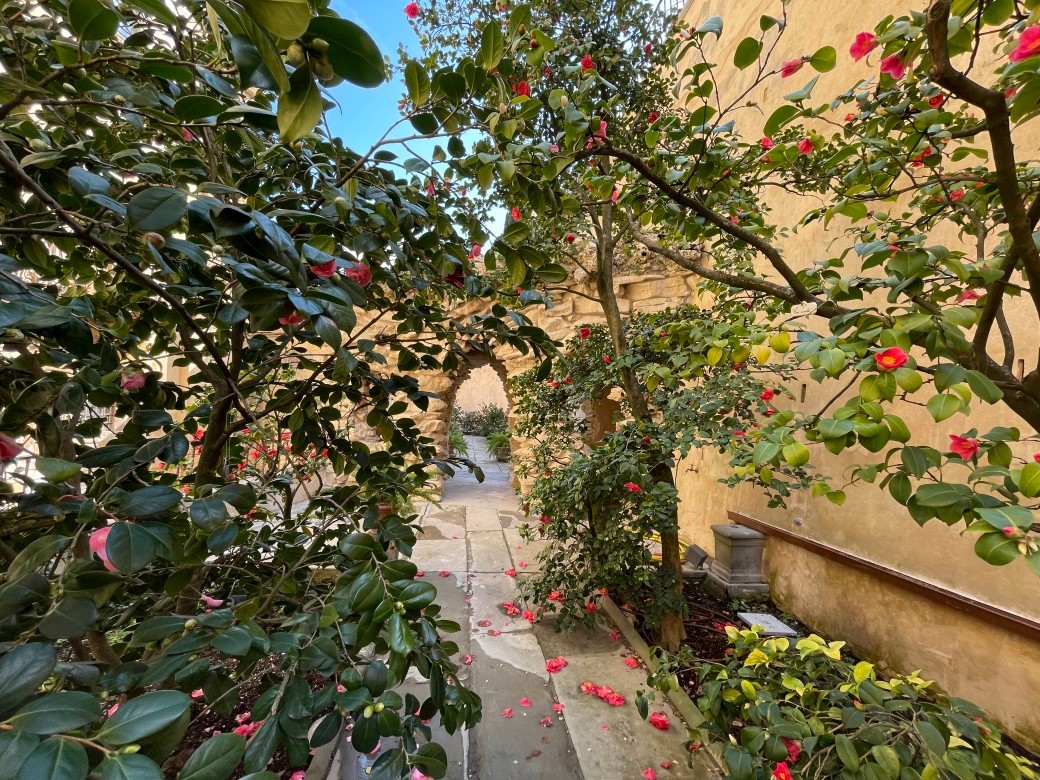 Giardino delle Camelie
Giardino delle CamelieGiardino di Villa Bardini
The Bardini Garden has belonged to wealthy families since the Middle Ages: it was first used for agricultural activities, but then transformed throughout the centuries into the splendid Italian garden we can see today. It takes its name from the antique collector Stefano Bardini, the Prince of antique dealers, who owned it at the beginning of the 20th century and used to meet with his wealthy clients in this spectacular setting. The Bardini Garden is made up of three parts, all different in period and style: the Italian garden with its magnificent Baroque staircase, the English forest with its exotic elements representing a rare example of an Anglo-Chinese garden, and the vegetable garden where there is a new orchard and the splendid wisteria-covered pergola which blooms in spring between April and May.
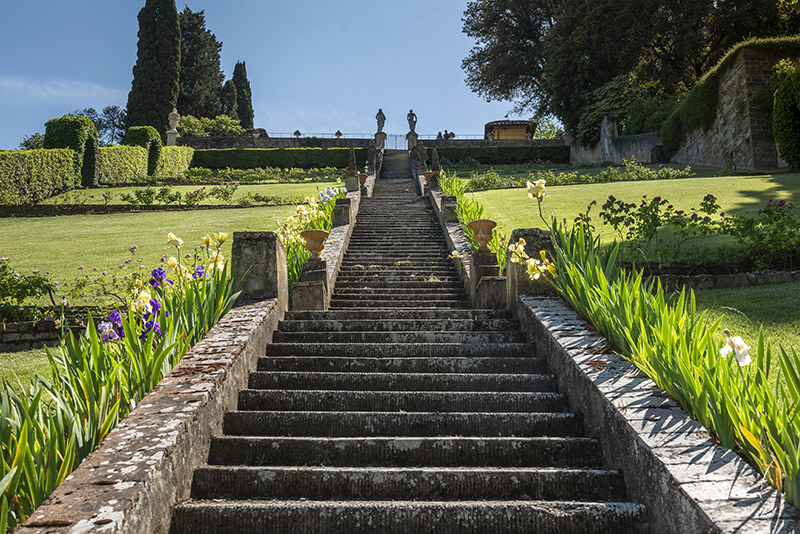 Villa Bardini ph. Pasquale Paradiso
Villa Bardini ph. Pasquale ParadisoGiardino delle Rose
A real jewel of a garden located below Piazzale Michelangelo which features over a thousand varieties, including 350 species of ancient roses, and offers a unique view of the city. It is enriched by the works of the Belgian artist Jean-Michel Folon: you can admire the view looking through the Partir suitcase, have a rest next to the man of Folon on the otherworldly bench of the Je me souviens installation, you can caress Chat, the large cat sleeping on the grass between the rose bushes and you can admire the city from above in the company of Envol. It even has a touch of Japanese with a garden donated to the city by the twin city of Kyoto: you will feel like you are surrounded by the amazing natural wonders of the Orient.
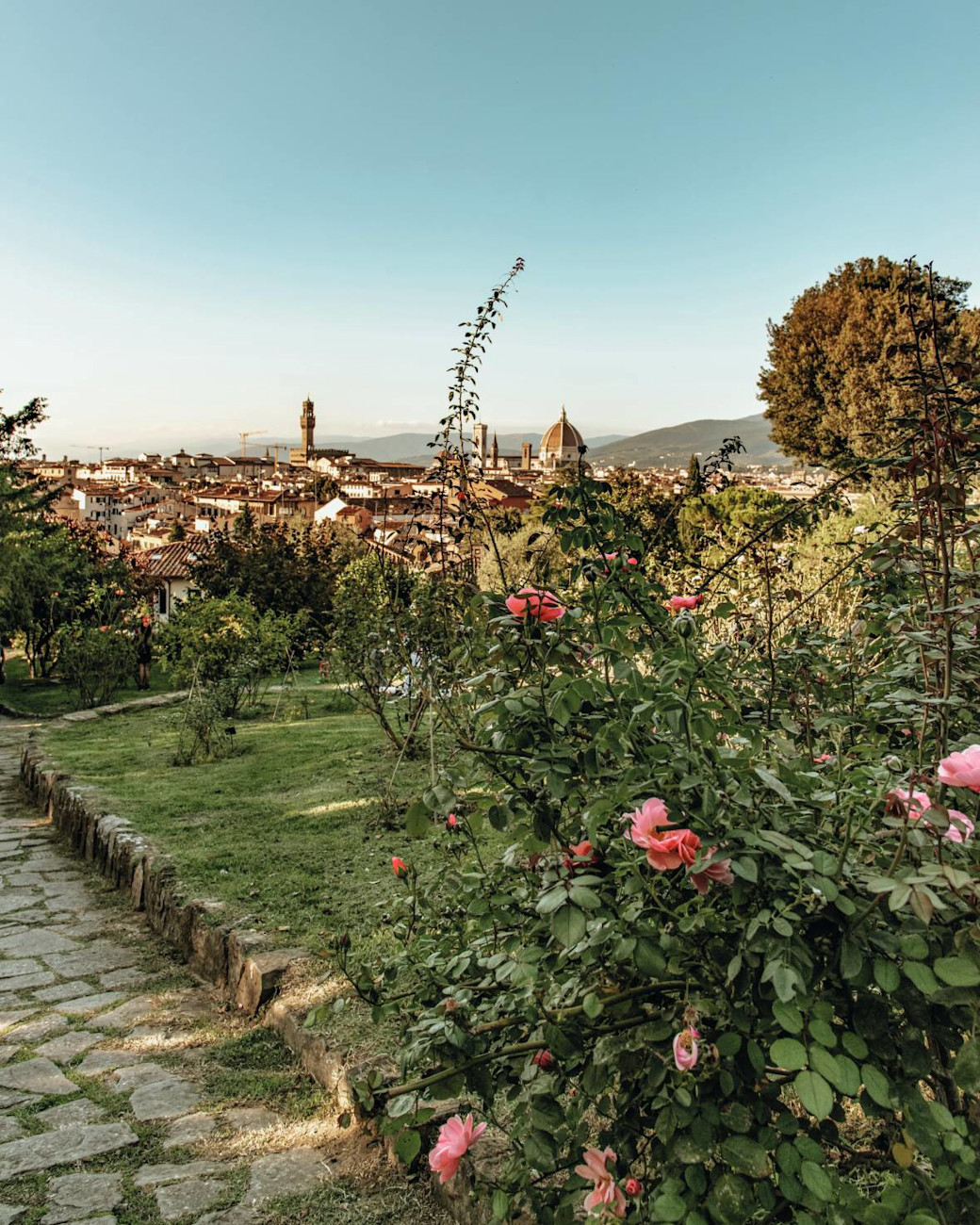 Giardino delle rose ph Ottavia Poli
Giardino delle rose ph Ottavia PoliGiardino dell’Iris
Located on the corner of Viale dei Colli and Piazzale Michelangelo in the Podere dei Bastioni, the Iris garden is dedicated to the flower that has been the symbol of the city since 1251. The Premio Firenze started with hosting an annual international competition for the best varieties of Iris, and today, it is a treasure trove of wonder where the most beautiful species of iris grow in steep meadows among olive trees in a landscape that seems to be millions of miles away from the city. A multitude of shapes and colours which cover almost the entire ground of the garden, and when in full bloom, it turns it into a magnificent carpet of colour. It is only open two weeks in May from 10am to 6pm.
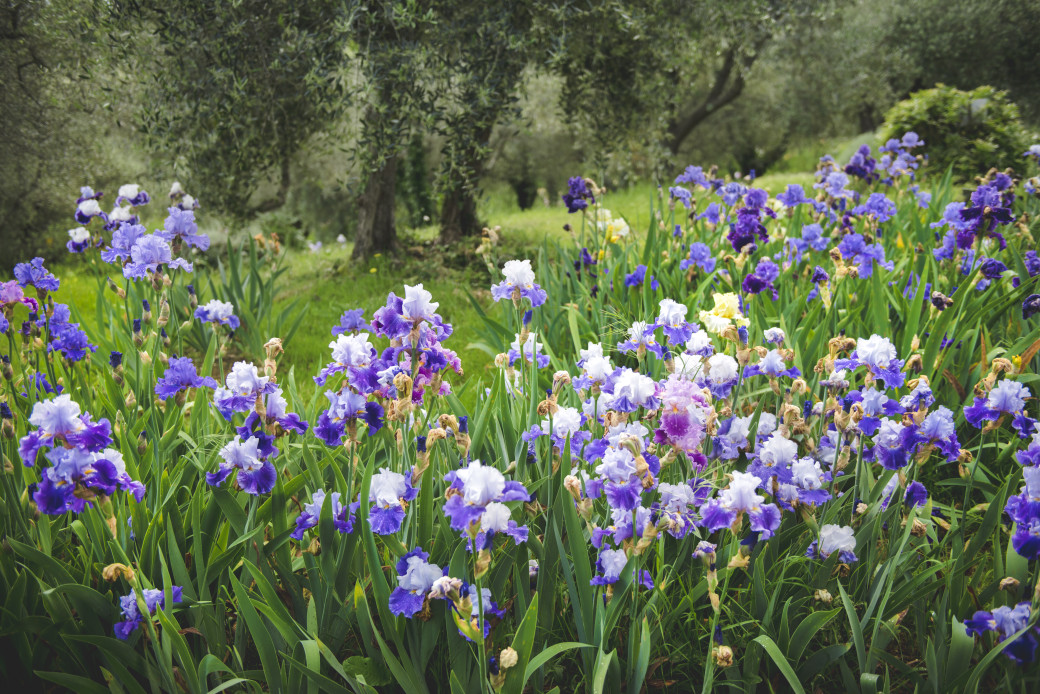 Giardino dell'Iris ph. Pasquale Paradiso
Giardino dell'Iris ph. Pasquale ParadisoGiardino di Palazzo della Gherardesca
It does not seem as if you are in Florence when walking along the avenues of the secret park of the iconic Four Seasons Hotel Florence; one of the most beautiful and undiscovered green areas of the city. It was once a botanical garden in the 14th century, and restored by Count Guido della Gherardesca in 1820, who made it into an elegant garden inspired by Romanticism. Today, it still retains all of its original splendour with pools, statues and fountains of alluring charm. While meandering, you will encounter the famous temple, the Kaffeehaus and many centuries-old trees from redwoods to conifers. This oasis connects to the two buildings which are part of the Four Seasons Hotel: the 15th-century Palazzo della Gherardesca and La Villa, a former 16th-century convent. It is only accessible to hotel guests except for special occasions such as the Open Day held every December (find out all the best hotels in the city here).
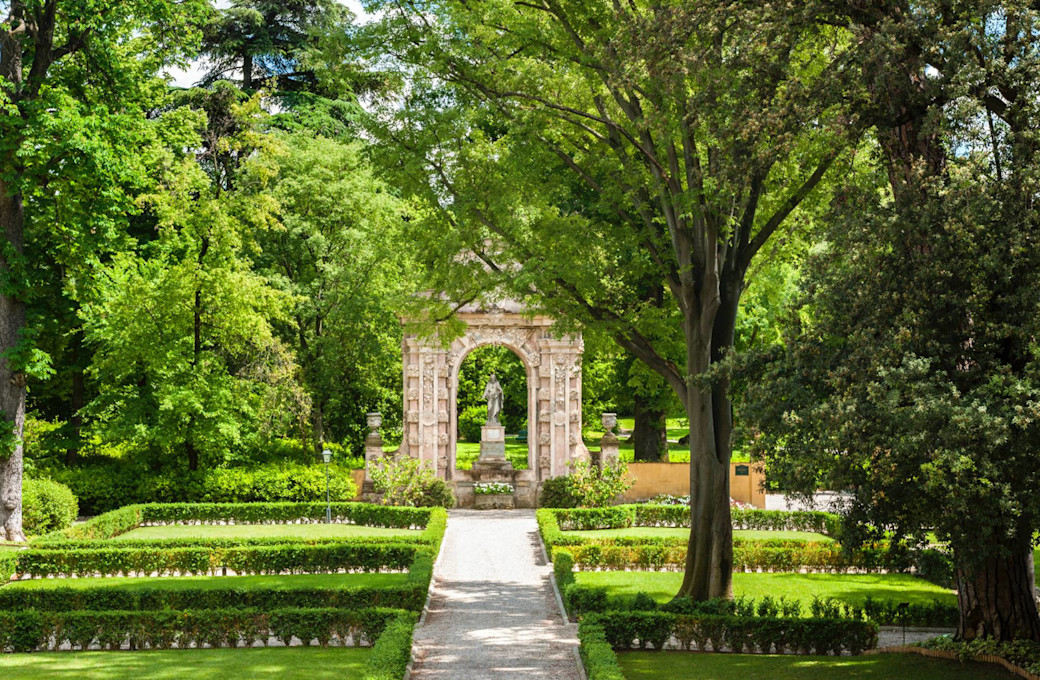 Giardino della Gherardesca - Four Season Hotel Firenze
Giardino della Gherardesca - Four Season Hotel FirenzeGiardino Torrigiani
It is the largest private garden in Europe situated within the city walls. It was already famous in the sixteenth century as a botanical garden but was given a new lease of life at the beginning of the nineteenth century when Marquis Pietro Torrigiani enlarged it, thus transforming it into an English romantic garden, according to the tastes of that period. The famous neo-Gothic style tower inspired by the family’s coat of arms was designed by engineer Gaetano Baccani who also built the bell tower of the Basilica of Santa Croce. As well as its architectural importance, it is also renowned for its botanical garden, extremely rich in tree species and plants from different parts of the world.
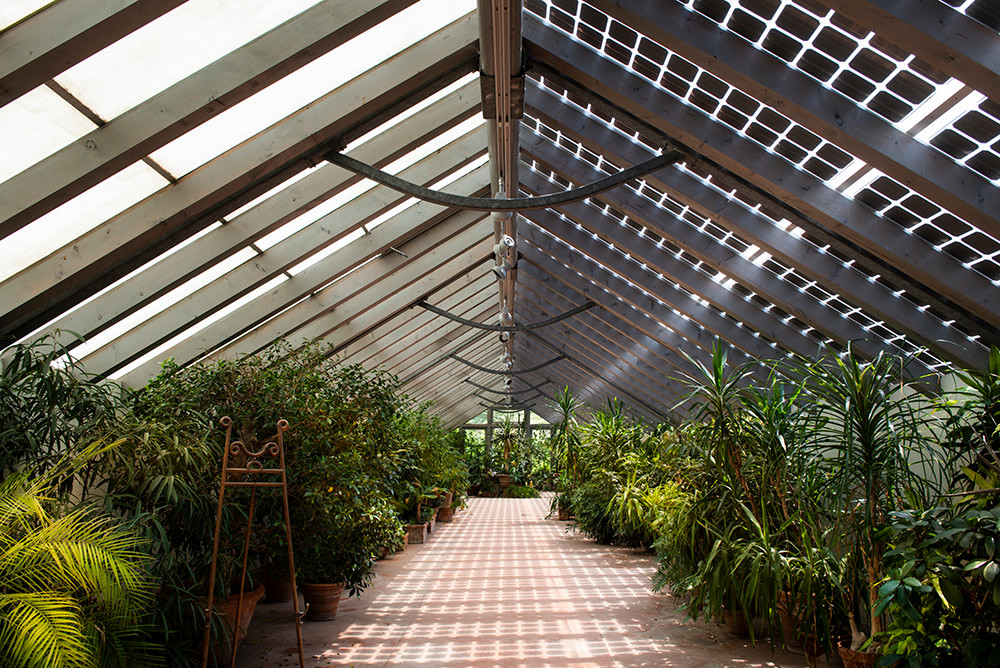 Serra Giardino Torrigiani
Serra Giardino TorrigianiGiardino Dell’Orticoltura
Extremely elegant that it was chosen as a set for the films Amici miei – Atto II and Sotto una buona stella, the Horticulture Garden was founded by the Tuscan Horticultural Society in 1852 in an estate belonging to Marquis Ginori Lisci and Marquise Marianna Venturi. One of its key features is the tepidarium in iron and glass in Art Nouveau style designed by architect Giacomo Roster and built in 1880 on the occasion of a national exhibition being organised in the city. Not far from the spectacular greenhouse, there is a lawn featuring a splendid Renaissance loggia. Through an underpass beyond the railway, you can access the Garden of the Parnassus, a small green area that sits on a panoramic slope, featuring a unique dragon-shaped fountain, which cleverly winds around the staircase.
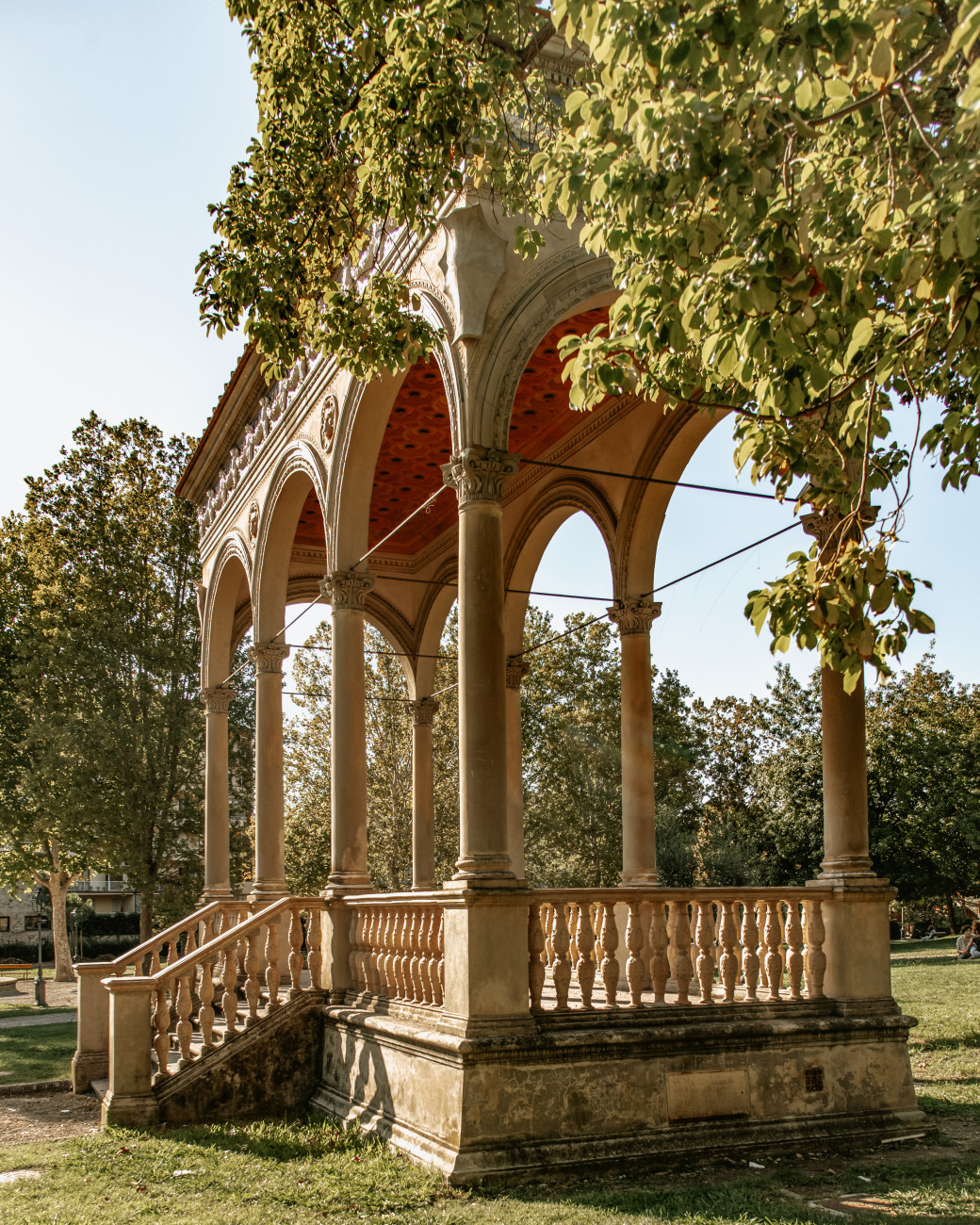 Loggia del giardino dell’Orticoltura ph. Ottavia Poli
Loggia del giardino dell’Orticoltura ph. Ottavia PoliGiardino Corsini
A Renaissance garden designed and built for the residence of the Corsini family in 1620 by architect Gherardo Silvani. Giardini Corsini is a hidden gem protected by a high wall that surrounds the ancient Palazzo Corsini al Prato where the family still live today. It features about 130 citrus plants thanks to the three large lemon groves which shelter the plants during winter time. To the west of the garden, there is also the last plot of agricultural land in the centre of Florence with centuries-old lime trees. A large colony of turtles has roamed here freely in the garden for centuries. Once a year in mid-September, the garden hosts Artigianato e Palazzo, an exhibition dedicated to artisanal excellence and ancient crafts (You can also read our interview with Sabina Corsini, president of the Corsini Garden Association, here).
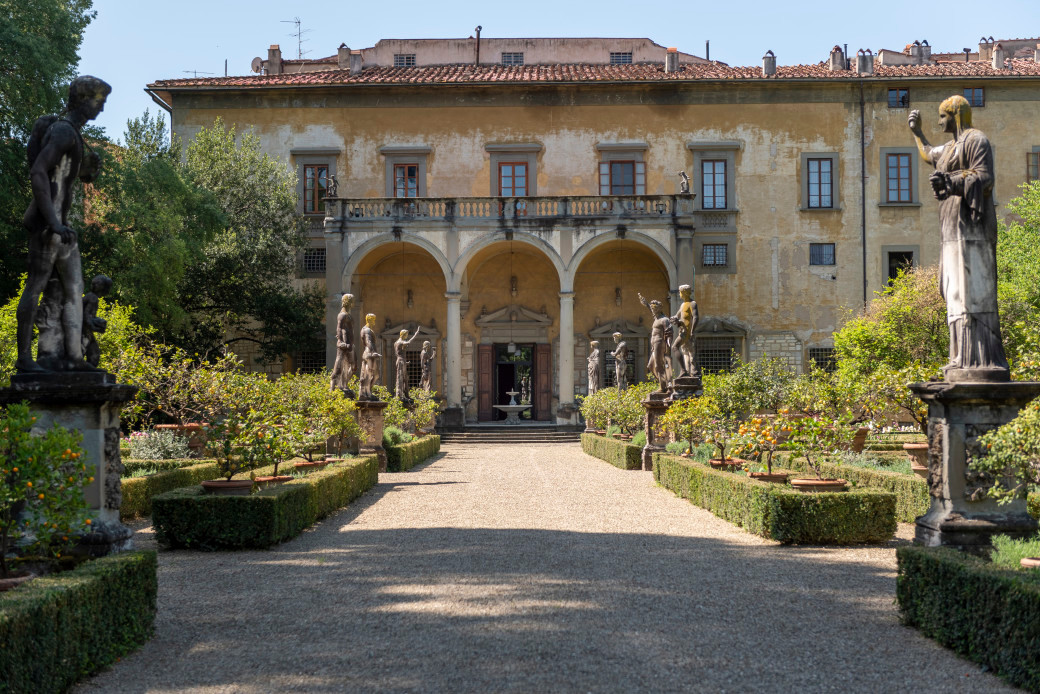 Giardino Corsini ph. Pasquale Paradiso
Giardino Corsini ph. Pasquale ParadisoGiardino dei Semplici
It is the third oldest botanical garden in the world. It dates back to 1545 when Cosimo I dei Medici rented the land from the monastery of San Domenico in Cafaggio on which the vegetable garden was to be built. The Giardino dei Semplici was called in this way as it was to be a vegetable garden with medicinal plants or “Semplici”. It covers a surface of 2.3 hectares with 1694 m² occupied by greenhouses. The layout of the flower beds recalls the Medieval Hortus conclusus design dedicated to the cultivation of medicinal and aromatic plants, also present in the secret garden of the Renaissance villa. The main building occupying the entire side of Via Micheli houses the offices, the library, a work shop and the greenhouses which are divided into warm greenhouses for tropical plants and cold greenhouses for plants requiring a lower temperature.
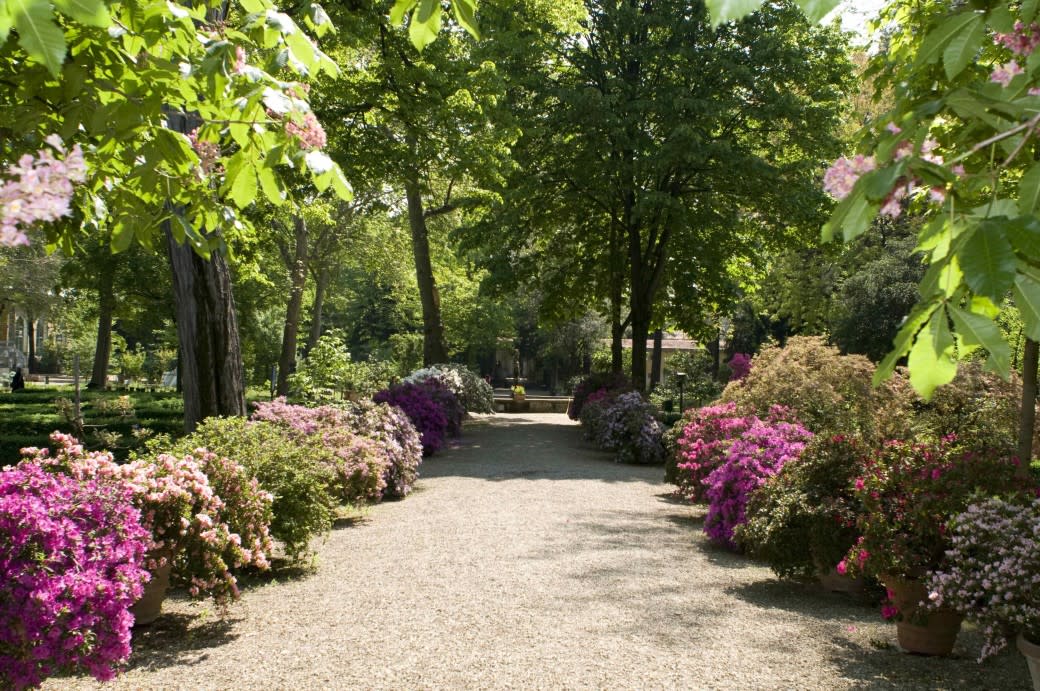 Giardino dei semplici
Giardino dei semplici








